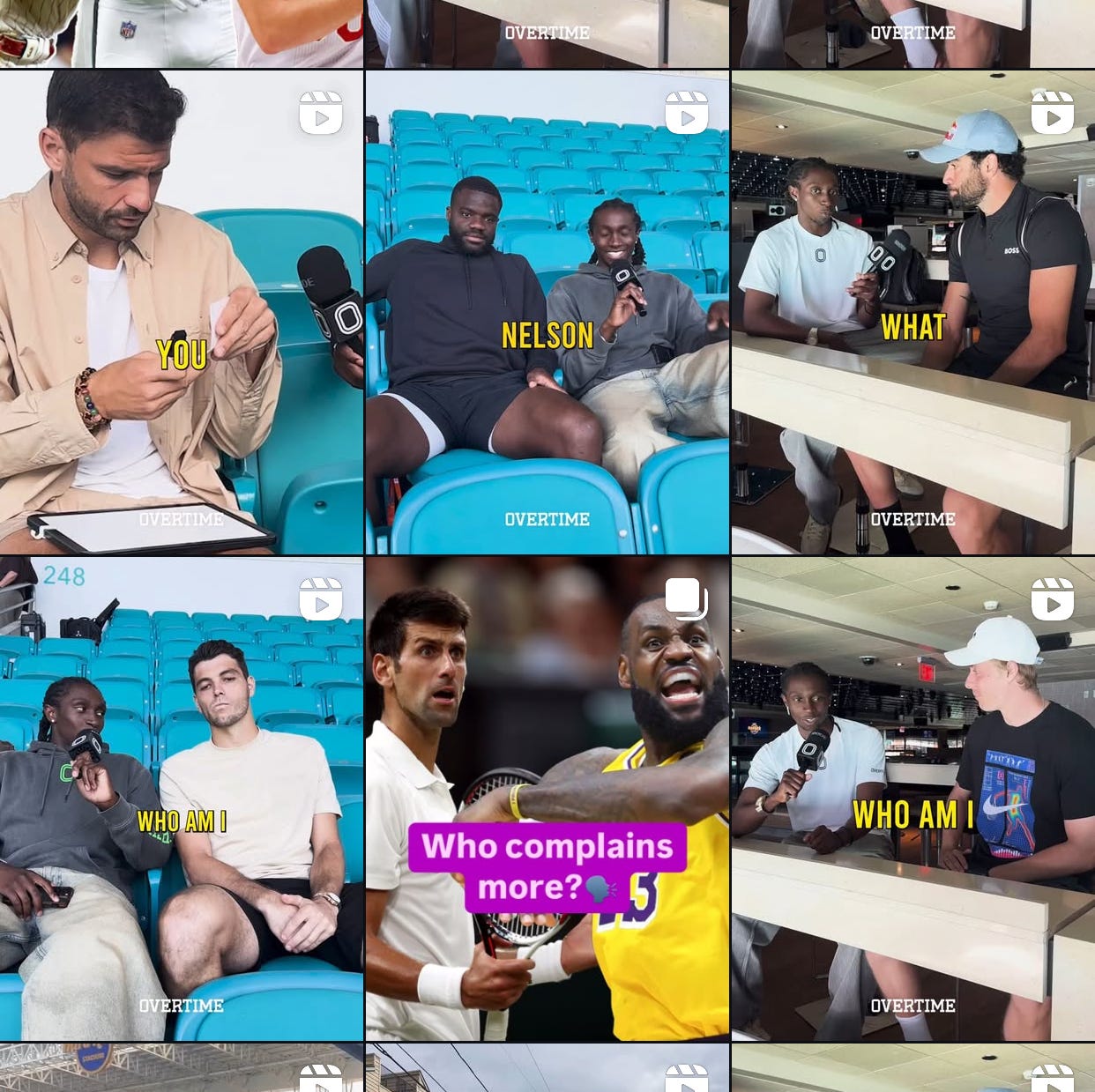The ATP has a plan to win Gen Z and Gen Alpha: It's named Overtime
The ATP has signed with a company whose expertise is to bring Gen Z and Gen Alpha to professional sports. And I'm bringing you the exclusive on a plan that will impact all tennis fans.
Welcome back! In today’s paid edition, we’re discussing the ATP’s new partnership with sports media company Overtime in an exclusive with both the ATP and Overtime’s insights about the strategy. Why do you need to care about that? Because it’s about to bring change in the content fans get from the sport and in the way players are made to share their journey.
If you like what you read, subscribe, spread the word and don’t hesitate to like and send a comment, as all of this helps the discoverability of the newsletter. You can all look forward to more content coming your way soon during my on-site coverage of the WTA 1000 and Masters 1000 in Madrid.
The ATP has chosen disruption to grow the game, its cultural capital, and its money bag. In other words, to get Gen Z and Gen Alpha to commit to tennis. They haven’t chosen any disruption, but one that’s made a business of cracking the youth code: Overtime, a media company that’s been raking in the deals in professional sports in recent years because of one über precious skill these days: bringing Gen Z and Gen Alpha in. 80% of their audience is under 35.
Tennis, in its battle for mainstream relevancy, is going all in to rejuvenate its audience. With a catch: Tennis wants it all, and so it rejects the idea of letting its older fans (and as of now, the most loyal ones) down. Here’s the mandate for Overtime: Help tennis crack the youth code without alienating its base. “What we've seen so far in the three tournaments that we've been to already is personalities and reactions and a vibe that we haven't seen from a lot of these tennis players before,” Farzeen Ghoarshy, president of Overtime told me.
I ain’t going to crack the Gen Z and Gen Alpha codes, but for you all here, I’m trying to crack this tennis era where content creators are called for help by instances aware of the risk of losing a step to other niche sports that are right now attracting a much younger crowd. Why this obsession with the youth? Well, have you taken a good look at our society right now? No? Well, pro sports and brands have so… Social media, despite the ban risks and the algorithm tyranny, still sells a lot for the brands that professional sports want to get, and also provide the biggest exposure and so growth tools for what these sports but also their athletes need to build empires. Gen Z and Gen Alpha live on social media feeds so you gotta meet them there.
“It's hard to get the best content and convey the excitement of the game and the interesting personalities of our players if we're too rigid in our approach and how we're making those players available. That's the process we're working on and Overtime is going to help us with that,” Andrew Walker, head of marketing at the ATP told me.
On-court performances aren’t enough anymore to attract the new generations and the brands that want to appeal to them: one needs to give them more. More of what? Of personalities, of reasons to care for who wins what match and who is playing where. And that’s when Overtime comes to play: the company’s entire business is about connecting Gen Z and now Gen Alpha to athletes and sports events. Overtime is all about storytelling. And it’s exactly where tennis has been struggling for a while. If you’re familiar with this space, you know I’ve been covering this issue for a while already.
If you need a reminder, have a read here:
So when I found out about Overtime’s new involvement in tennis, I was very interested. And so I reached out and talked to Andrew Walker, head of the ATP marketing department, and Farzeen Ghorashy, the president of Overtime. Here, I’m presenting you the new vision the ATP has for its coverage and its growth strategy regarding the relationship with the fans and the players, as well as how Overtime intends to disrupt tennis for the sport’s sake. No doubt that there will be hits (I liked the “Who complains to the refs more: NBA or Tennis players”) and there will be misses (Would I personally do without the bro vibe of asking male players how they’d pick girls via dm? For sure).
How far can they go? How far will the tennis players let it all go? How far will the tournaments and other tennis business let them go? What’s the long-term plan? Also read how Overtime made a point before joining on wanting to work with tennis as a whole, and so including women’s tennis. Overtime already owns its own sports leagues so could they create a tennis one? It’s just the start, but tennis’s content for the fans, the players’ brand building, and media coverage is about to change, so the way tennis looks to the new generations is about to change. If you want to know why and how, keep reading!








